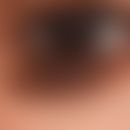DefinitionThis section has been translated automatically.
Phytotherapeutically used dried flowering shoot tips with flowers, leaves and stems of St. John's wort.
The drug comes mainly from cultivation in Germany, Eastern Europe and Chile.
Quality is defined in the European Pharmacopoeia (Ph. Eur.)
HMPC monograph: Dry extracts,, Well-established use: Mild and moderate depression. Traditional-use: St. John's wort preparations: temporary mental exhaustion; cut drug: mild gastrointestinal complaints, nervous restlessness and difficulty falling asleep. Externally as a liquid extract for minor wounds and skin irritations, including acne.
ESCOP monograph: internal:
Dry extracts with ethanol (50-68%)mild depressive episodes; dry extracts with ethanol or methanol 80%: mild to moderate depressive episodes
Powder, dry extracts 4-7:1, ethanol 35%, various liquid extracts, tinctures and a fresh plant press juice: intermittent mental fatigue. Powder: mild gastrointestinal discomfort.
External: mild skin inflammations, small wounds.
Commission E monograph: internal: psychovegetative disorders, depressive mood disorders, anxiety and/or nervous restlessness;
Oily St. John's wort preparations: dyspeptic complaints; post-injury treatment, myalgias (muscle pain), 1st degree burns.
Empirical medicine: irritable bladder, enuresis nocturna, poorly healing infected wounds, leg ulcer (oily preparation).
Trade namesThis section has been translated automatically.
Laif® 900 Filmtbl,
Arthrodynat® ointment, Bedan® cream, Bedan ® face cream, Befelka® oil, Buenoson® N ointment, Dolo-cyl® oil - muscle and joint oil, Jarsin® tbl 300-750, St. John's wort ratiopharm®, Kytta ointment®, Phönox Kalophön ointment, Rhoival® tea
You might also be interested in
Note(s)This section has been translated automatically.
St. John's wort has been shown to inhibit Cyp3A4 (see cytochrome P450 enzymes below). This leads to a slower degradation of its substrates (prolongation of efficacy). Phototoxic! Caution during the summer months, no UV exposure!
LiteratureThis section has been translated automatically.
- Apaydin EA et al.(2016) A systematic review of St. John's wort for major depressive disorder. Syst Rev 5:148.
- Becker LC et al. (2014) Amended safety assessment of Hypericum perforatum-derived ingredients as used in cosmetics. Int J Toxicol. 33(3 Suppl):5S-23S.
- Golsch S et al (1997) Reversible increase of photosensitivity in the UVB range by St. John's wort extract preparations. Dermatologist 48: 249-252
- Huang LF et al (2014) Hypericin: chemical synthesis and biosynthesis. Chin J Nat Med 12:81-88.
- Reichling J et al. (2003) St. John's Wort (Hypericum perforatum L.)--multicompound preparations versus single substances. Forsch Komplementarmed Klass Naturheilkd 10(Suppl1): 28-32.
- Saller R et al. (2003) St. John's Wort (Hypericum perforatum): a plurivalent raw material for traditional and modern therapies. Forsch Komplementarmed Klass Naturheilkd 10(Suppl1): 33-40.
- Schempp CM et al (2003) Randomised, placebo-controlled double-blind, half-site trial Topical treatment of atopic dermatitis with Hypericum cream. A randomised, placebo-controlled, double-blind half-side comparison study. Dermatologist 54: 248-253
- Schulz V (2001) Incidence and clinical relevance of the interactions and side effects of Hypericum preparations. Phytomedicine 8:152-160.
- Wölfle U et al (20149 Topical application of St. John's wort (Hypericum perforatum). Planta Med 80(2-3):109-120.
- https://www.ema.europa.eu/en/documents/herbal-monograph/final-community-herbal-monograph-hypericum-perforatum-l-herba-well-established-medicinal-use_en.pdf
- https://arzneipflanzenlexikon.info/johanniskraut.php.
- Wenigmann M. (2017) Phytotherapy medicinal drugs, phytopharmaceuticals, application. Urban & Fischer, pp. 134-135
- Hoffmann J ET AL. (2020) New Herbal Biomedicines for the Topical Treatment of Dermatological Disorders. Biomedicines. 8, 27; doi:10.3390/biomedicines8020027.




